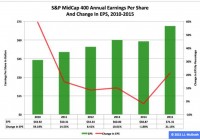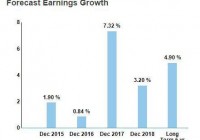All That Crap About Not Panicking?
Markets were down on Monday, of course; right now the S&P 500 is at 2057, right around where it started the year. In a way, we have no idea what will happen; and in a way, we know exactly what will happen. More importantly, we know that whenever the market finishes going down, it will then go up and make a new high with the variable being how long it takes. By Roger Nusbaum, AdvisorShares ETF Strategist It is still true. As I write this post Monday after the close, there is still a lot of uncertainty on how Greece will precisely play out. Markets were down on Monday, of course; right now the S&P 500 is at 2057, right around where it started the year and is flirting with its 200 day moving average. We have seen this sort of thing many times before, and after this clears up, there will be other big scary events , a term Ken Fisher has used previously. In a way, we have no idea what will happen; and in a way, we know exactly what will happen. As I write this, again on Monday afternoon, we don’t know when the global selling in equities will end (it might already be over by the time this post is published); we don’t know whether or not China, Puerto Rico or anything else will pile on to send markets lower, even into a bear market (this is not a prediction). This could be serious or it could be one of the many big scary events that are quickly forgotten; we don’t know. We do know that the media will overreact. More importantly, we know that whenever the market finishes going down, it will then go up and make a new high, with the variable being how long it takes. The FTSE 100 recently eclipsed a high dating back to 2000; of course the NASDAQ broke its high from 2000 as well. At some point, the Nikkei will break the high from 1989, but again, no one knows when. There are different implications for different types of market participants, but they all revolve around the same things; not panicking and sticking to the strategy you thought would be a good idea when things hit the fan as they occasionally do. People in the accumulation phase need to keep accumulating. While the FTSE did just make a new high from 2000, that index has about doubled since 2009, so someone who kept accumulating should have caught most of that up move with the equity portion of their portfolio. People in the withdrawal phase should be prepared to take defensive action if that is the strategy they laid out for themselves ahead of time, or stand pat if that is the strategy they laid out for themselves ahead of time. A defensive strategy, which is what I believe in doing, offers the opportunity to make it a little easier emotionally to ride out large declines (remember, at this point we have no idea whether a large decline is coming) and standing pat (save for rebalancing) relies on remembering ahead of time that large declines will be uncomfortable, but that they end and then markets recover, with the only variable being how long it takes; repeated for emphasis. I realize none of this is new and at a high level this is something everyone knows, but knowing and doing can be two different things. Hopefully, a reminder is useful. Editor’s Note: This article discusses one or more securities that do not trade on a major U.S. exchange. Please be aware of the risks associated with these stocks. Disclosure: I/we have no positions in any stocks mentioned, and no plans to initiate any positions within the next 72 hours. (More…) I wrote this article myself, and it expresses my own opinions. I am not receiving compensation for it. I have no business relationship with any company whose stock is mentioned in this article. Additional disclosure: To the extent that this content includes references to securities, those references do not constitute an offer or solicitation to buy, sell or hold such security. AdvisorShares is a sponsor of actively managed exchange-traded funds (ETFs) and holds positions in all of its ETFs. This document should not be considered investment advice and the information contain within should not be relied upon in assessing whether or not to invest in any products mentioned. Investment in securities carries a high degree of risk which may result in investors losing all of their invested capital. Please keep in mind that a company’s past financial performance, including the performance of its share price, does not guarantee future results. To learn more about the risks with actively managed ETFs visit our website AdvisorShares.com .

